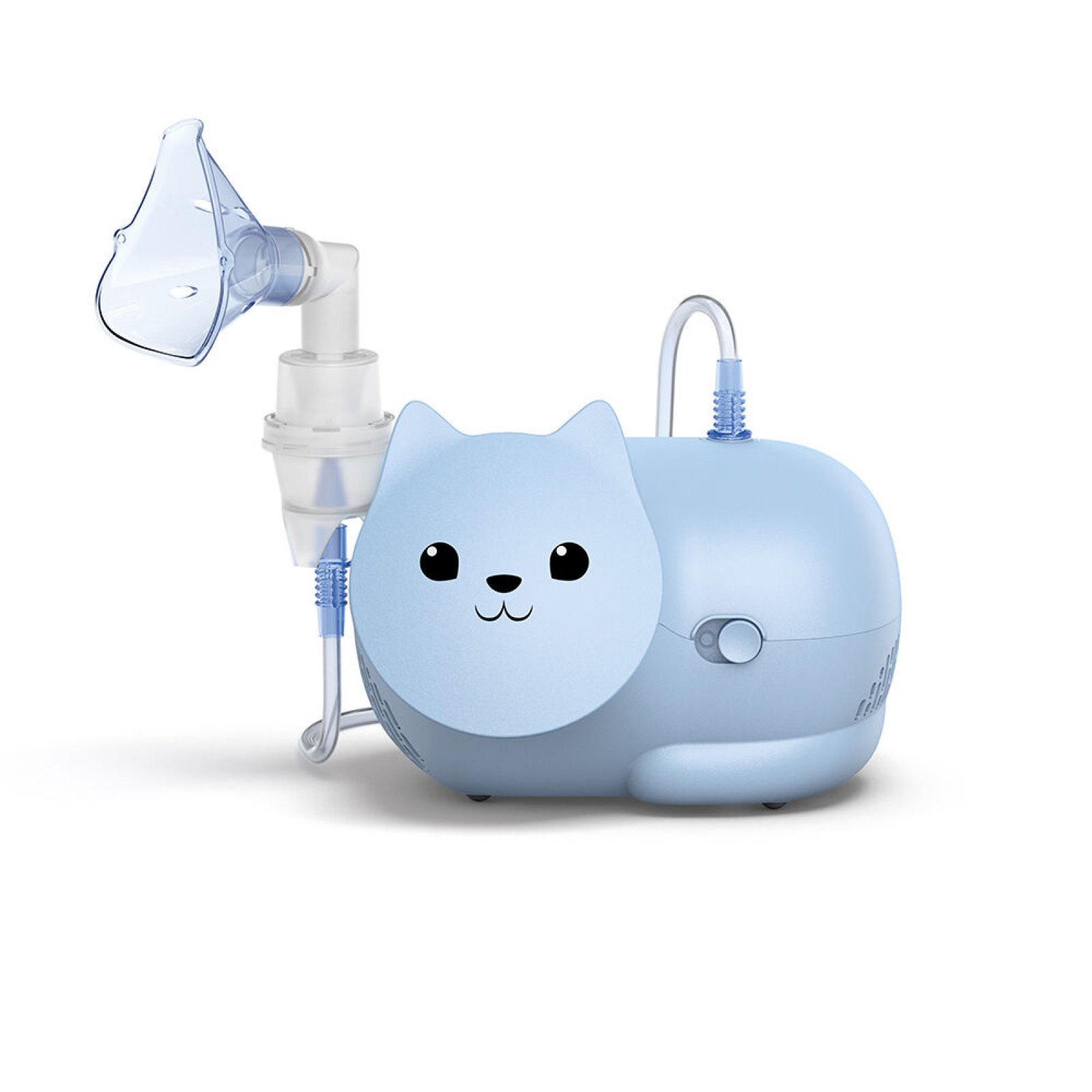
Nebulisation Therapy
Nebuliser buying guide: how to choose the right nebuliser?
Nebuliser buying guide: how to choose the right nebuliser? Why to use a nebuliser In the case of inflammatory respiratory tract diseases, the right inhaler will help you quickly and effectively to relieve your symptoms.

Why to use a nebuliser
In the case of inflammatory respiratory tract diseases, the right inhaler will help you quickly and effectively to relieve your symptoms.
Have you been advised to use medications that protect the respiratory tract against inflammation and expand the bronchi in the long term?
In this case, it is also important that the active ingredient acts at the site of application in order to prevent the whole body being affected by taking tablets.
With a specially selected nebuliser, the medication is able to travel to the area where it needs to work. Nebuliser machines are also often the best solution for administering medication to the respiratory tract in children and the elderly. For children, nebulisers are far easier to use than Metered Dose Inhalers (MDI) and powder inhalers.
Different nebulisers are available to suit the different requirements of the therapy. In consultation with your doctor, you will be able to find the nebuliser that best suits your needs, enabling you to keep your symptoms under control and breathe easier.
How to select the right nebuliser
There are many different types of nebuliser, which each satisfy different medical needs. The question is, which nebuliser is right for me? Choosing the right nebuliser depends on the nature of your ailment or the symptoms of your child. When selecting a nebuliser for your baby, different factors play a role when you are choosing the right nebuliser for yourself. Other important aspects to consider are how often, how intensively and where you will be using the device.
Consider the following questions when deciding on the right nebuliser for you:
What disease are you using the nebuliser for?
The various respiratory tract diseases affect different parts of the respiratory system. The droplet or particle size is decisive for ensuring the location where the droplets are deposited upon inhalation, and thus for the part of the respiratory tract that is treated. Larger medicine particles are deposited in the upper respiratory tract. Some examples of upper respiratory tract diseases are a runny nose (or rhinitis) and chronic sinusitis. Smaller medicine particles reach the lower respiratory tract. COPD, asthma, bronchitis and bronchiolitis are examples of lower respiratory tract diseases. It is therefore important to choose a nebuliser which supplies the correct particle size for the disease being treated.
Nebulisers for upper airway treatment
If you are looking for a nebuliser for rhinitis or chronic sinusitis, discover C102 Total. It includes nasal shower to help prevent or treat a blocked nose.
Nebulisers for lower airway treatment
If you need a nebuliser for asthma or COPD, Omron MicroAir U100 and C28P would be good options.
Who will be using the nebuliser?
For patients with severe breathing difficulties, such as COPD, or asthma patients, nebulisers with a higher level of aerosol output are better because they deliver higher levels of the active ingredient.
For babies and children, a quieter nebuliser that forms a smoother mist may be more pleasant and less disturbing when the medicine is inhaled.
When treating patients with multiple respiratory tract diseases, a nebuliser which can produce different particle sizes is recommended.
Nebulisers for children
If you need a nebuliser for children, Nami Cat with its cute design is a good choice. It’s effective for conditions in the lower airways.
Nebulisers for children and adults
MicroAir U100, C28P and C102 Total are the nebulisers for both children and adult use.
Where and how often will the nebuliser be used?
If you want to use your nebuliser very frequently, you should choose a sturdy nebuliser with a high aerosol output, which is suitable for intensive use.
If treatment is required at different times during the day, a lightweight and portable nebuliser is recommended.
If you are travelling a lot, a fully portable nebuliser, i.e. a mesh nebuliser, is the best choice for you. Similar in size to an inhaler, travel nebulisers are battery-powered but deliver optimum performance and flexibility.
Home-based nebulisers
If you are looking for a home nebuliser, C28P is a great option.
Portable nebulisers
If you need a handheld nebuliser, MicroAir U100 and Mini Air 360 + are good options. You can get relief by using the device from any angle or position. It’s an instant therapy in your pocket!
See all OMRON nebulisers
Comparing nebulisers
Here’s the technical checklist when purchasing a nebuliser:
Technology: membrane (mesh) or compressor
Users: adults, teenagers, children or babies
Sound level: quiet or low-noise
Pathology: upper or lower respiratory tract.
Particle size (MMAD): large particles for upper respiratory tract, smaller particles for lower respiratory tract.
Nebulisation rate: the higher the rate, the more medication the device can administer per minute.
Aerosol output: the amount of medication deposited in the lungs.
Place of use: flexible for use on the go, frequent use throughout the day required, mesh nebuliser offers maximum flexibility
Where to buy a nebuliser?
Nebulisers are available from online shops as well as from pharmacies and medical suppliers.
OMRON, world’s leading manufacturer of medical devices, offers a wide range of high quality and clinically tested nebulisers that you can choose from.


